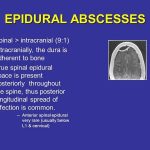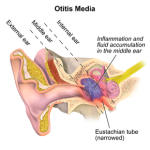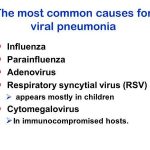
Upper respiratory infections (URIs) affect the apparatus of the upper airways, which is made up of the nose, paranasal sinuses, trachea, pharynx and larynx. Syndromes affecting these structures are sometimes associated with one another, and one upper respiratory infection can progress to another type. It can be difficult to distinguish these infections from one another because they produce similar signs and symptoms. Frequently occurring URIs include the common cold, pharyngitis, laryngitis, croup, epiglottitis and sinusitis. However, the incidence of epiglottitis has significantly decreased since the introduction of the universal Haemophilus influenzae type b (Hib) vaccine. Common Upper Respiratory Infections URI Causative Agent(s) Symptoms Treatment Common cold Rhinovirus, coronavirus, respiratory syncytial virus […]







